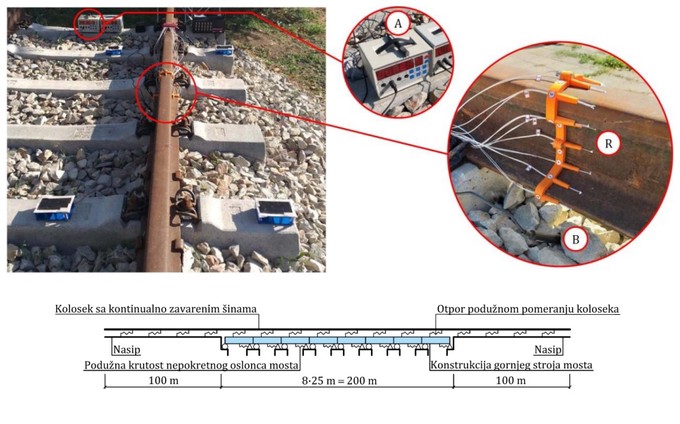
Contribution to numerical analysis of basic and additional temperature stresses in continuously welded rails

Contribution to numerical analysis of basic and additional temperature stresses in continuously welded rails
Abstract
In this doctoral dissertation basic and additional temperature stresses in continuously welded rails were investigated using numerical analysis based on the finite element method. The main aims of the research are: (1) determination of the rail temperature field and basic temperature stresses due to uneven temperature distribution, (2) quantifying the redistribution of temperature and basic temperature stresses due to heat transfer between the rail and the sleeper, as well as between the rail foot and the ballast, (3) comparative analysis of basic temperature stresses determined by using numerical analysis with the basic temperature stresses determined in accordance with engineering practice, (4) quantifying the influence of track and bridge parameters on the additional temperature stresses in continuously welded rails on the bridge and defining guidelines for the integral design of track and bridge structures. The dissertation explains the stress structure in continuously welded rails, as well as the formation mechanisms of basic and additional temperature stresses. The measurement system developed by the author for the needs of experimental measurements of rail surface temperatures, as well as the methodology that was developed for determining the rail temperature field and basic temperature stresses were presented. The methodology is based on the usage of experimentally measured rail surface temperatures and coupled transient thermal-stress analysis. The obtained results of experimental measurements and numerical analysis quantified and confirmed the effects of heat transfer, lower temperatures and basic temperature stresses in the rail cross-section next to the sleeper, as well as in the rail foot. The main advantages of numerical analysis are taking into account the heating history of the rail, as well as the effects of thermal inertia, with the possibility of qualitative and quantitative insight into the rail stress distribution. Accordingly, applying numerical analysis, in comparison with common engineering calculations, resulted in lower temperatures and basic temperature stresses inside the rail when the rail temperature tends to rise, as well as higher temperatures and basic temperature stresses inside the rail when the rail temperature tends to fall. Also, analysis of additional temperature stresses in continuously welded rails on the bridge due to temperature influences in the bridge superstructure was performed. The structure of the numerical model for analysis of the track/bridge interaction, as well as the influential parameters of track and bridge structures were presented. A parametric analysis for five representative bridge structures with continuously welded rails was performed and the influence of the considered parameters was quantified. It was determined that increasing the rail cross-sectional area, as well as decreasing the longitudinal track resistance, bridge expansion length, and longitudinal stiffness of the fixed bridge support, lead to reduction of additional temperature stresses in continuously welded rails on the bridge.